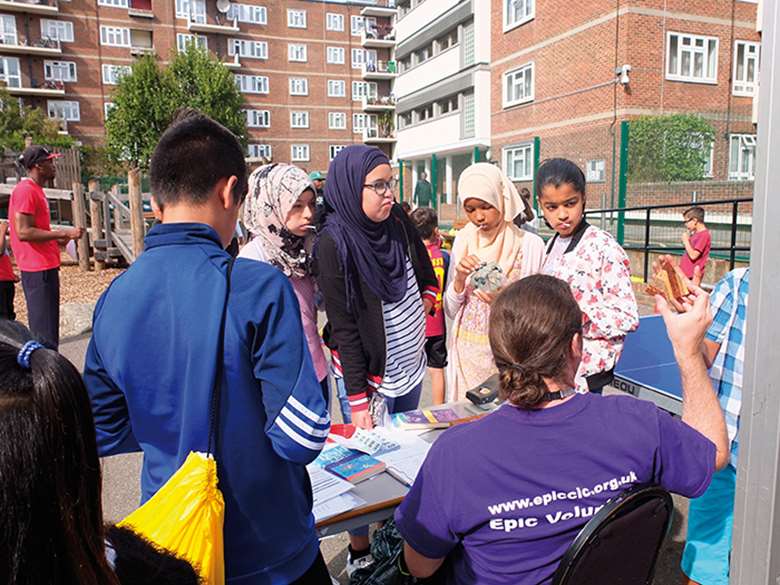Responding to Grenfell disaster
Brendan O'Keefe
Wednesday, July 26, 2017
The community response to the Grenfell Tower disaster demonstrates the value of local organisations

We are still struggling to come to terms with the enormity of the disaster that has befallen the community of North Kensington.
The sense of shock and disbelief remains palpable. It is difficult to talk about upsides, but as many have said, the response from the community and the local voluntary sector has been extraordinary.
My own organisation, Epic Community Interest Company (CIC) - which provides outdoor education, health and employability programmes to young people in the area - was one of many stepping up.
Our centres opened from early morning on the day of the disaster and as soon as we did, donations of food and clothing came flooding in. Epic staff, whether on duty or not, flocked to the scene to lend a hand.
Overwhelming support
We were overwhelmed at times and staff worked beyond the point of exhaustion. Such was the generosity of local people and local businesses, we were actually having to turn donations away as night fell.
Our efforts were more than matched by other local organisations - Rugby Portobello Trust, Harrow Club, Westway Trust, Clement James Centre, Latymer Christian Centre and many more - all of whom reacted with great determination to a challenge beyond comprehension.
The response went further than attending to the immediate physical needs of survivors and the displaced. A hug and a shoulder to cry on, coming from a place of common humanity, was often just as important.
The heartbreaking scenes we all witnessed will live forever in the memory.
What is so striking is that the staff in our organisations did not wait to be told what to do. They just went ahead and did what they felt to be right.
Local knowledge and networks built up over time proved vital, providing a sharp rebuke to anyone who thinks that organisations can be parachuted into communities and deliver to the same extent.
It shows the real value of having well established organisations with strong roots in the community. Such organisations are driven by a sense of local responsibility rather than a payment mechanism.
Our priority now is to do all we can to build on the collaborative effort and extraordinary community spirit evident since the disaster. We are working with local partners and young people to help plan for long-term community renewal.
John Lyon's Charity has brought together major funders willing to short circuit their standard application processes in order to get money to the frontline as quickly as possible.
Flexibility and innovation
This is just the type of flexibility and innovation we need.
Kensington and Chelsea Council was at the forefront of public sector innovation when it created Epic CIC and it should now seize the opportunity to develop an equally innovative approach to working with the local third sector - one where the response to the disaster is catalysed into a movement for long-term healing and renewal.
This will require an approach whereby:
- The council realigns its perspective to that of an investor in service providers in the context of a joint venture
- The council prioritises becoming a partner in innovation rather than being led by a procurement mentality
- The focus moves to long-term regeneration and the creation of opportunities rather than short-term contracting
- Partnerships are established on principles of trust rather than defined principally in commercial terms
- The legislation exists to allow this to happen. It is called an ‘innovation partnership' - often talked about, but too rarely used
- An Innovation Partnership would provide the framework for the approach outlined above.
From the disaster of Grenfell must emerge a new and more creative way of engaging with local organisations with strong roots in the community.
GRENFELL TOWER FIRE - KEY FACTS
- Grenfell Tower is a 24-storey, 67m-high social housing block of flats in Kensington, West London
- At around 1am on 14 June, a fire broke out in a fourth-floor flat and spread throughout the building
- As of 12 July 2017, 32 victims had been formally identified by the Metropolitan Police, although the disaster is estimated to have caused at least 80 deaths and 70 injuries
- Authorities have been unable to trace any surviving occupants of 23 out of the 129 flats
- Experts believe the fire was accelerated by the recently fitted exterior insulated cladding
- Sir Martin Moore-Bick has been appointed to lead the government-ordered public inquiry into the fire




